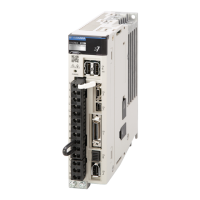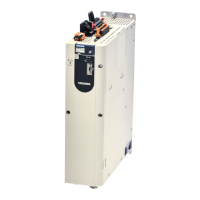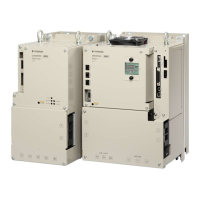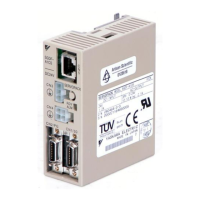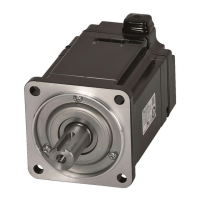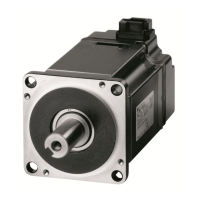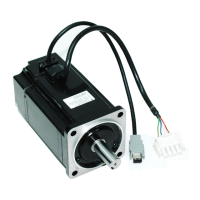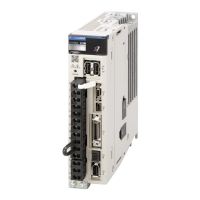9.10.7 Suppressing Different Vibration Frequencies with Anti-resonance Control
When you use anti-resonance control and increase the control gain, for some mecha-
nism, vibration can occur at a higher frequency than the frequency for which vibration
was suppressed. If this occurs, you can suppress vibration for more than one frequency
by adjusting Pn166 (Anti-Resonance Damping Gain 2).
Guidelines for Vibration That Can Be Suppressed
Anti-resonance frequency (Pn161): fa [Hz], Another vibration frequency
that occurs when the control gain is increased: fb [Hz]
– Vibration frequencies: 100 Hz to 1,000 Hz
– Range of different vibration frequencies: 1 < (fb/fa)
£
3 to 4
The following parameter settings are required to use anti-resonance control for more than
one vibration frequency.
Parameter Meaning When Enabled Classification
Pn160
n.0
(default
setting)
Do not use anti-reso-
nance control.
After restart Setup
n.1
Use anti-resonance con-
trol.
Anti-Resonance Frequency
Setting
Range
Setting Unit Default Set-
ting
When Ena-
bled
Classifica-
tion
Pn161 10 to 20,000 0.1 Hz 1000 Immediately Tuning
(applies to Speed Control, Position Control and Torque Control)
Anti-Resonance Gain Correction
Setting
Range
Setting Unit Default Set-
ting
When Ena-
bled
Classifica-
tion
Pn162 1 to 1,000 1% 100 Immediately Tuning
(applies to Speed Control, Position Control and Torque Control)
Anti-Resonance Damping Gain
Setting
Range
Setting Unit Default Set-
ting
When Ena-
bled
Classifica-
tion
Pn163 0 to 300 1% 0 Immediately Tuning
(applies to Speed Control, Position Control and Torque Control)
Required Parameter Set-
tings
Sigma-7 Series SERVOPACKs
Tuning
Anti-Resonance Control Adjustment > Suppressing Different Vibration Frequencies with Anti-resonance Control
| | PROFINET Communications - SIEP YEUOC7P 02A Revision 0 | en | 372
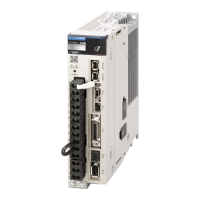
